Fov, Poha or Pohe in coconut milk is a tasty treat and Goan Diwali staple!
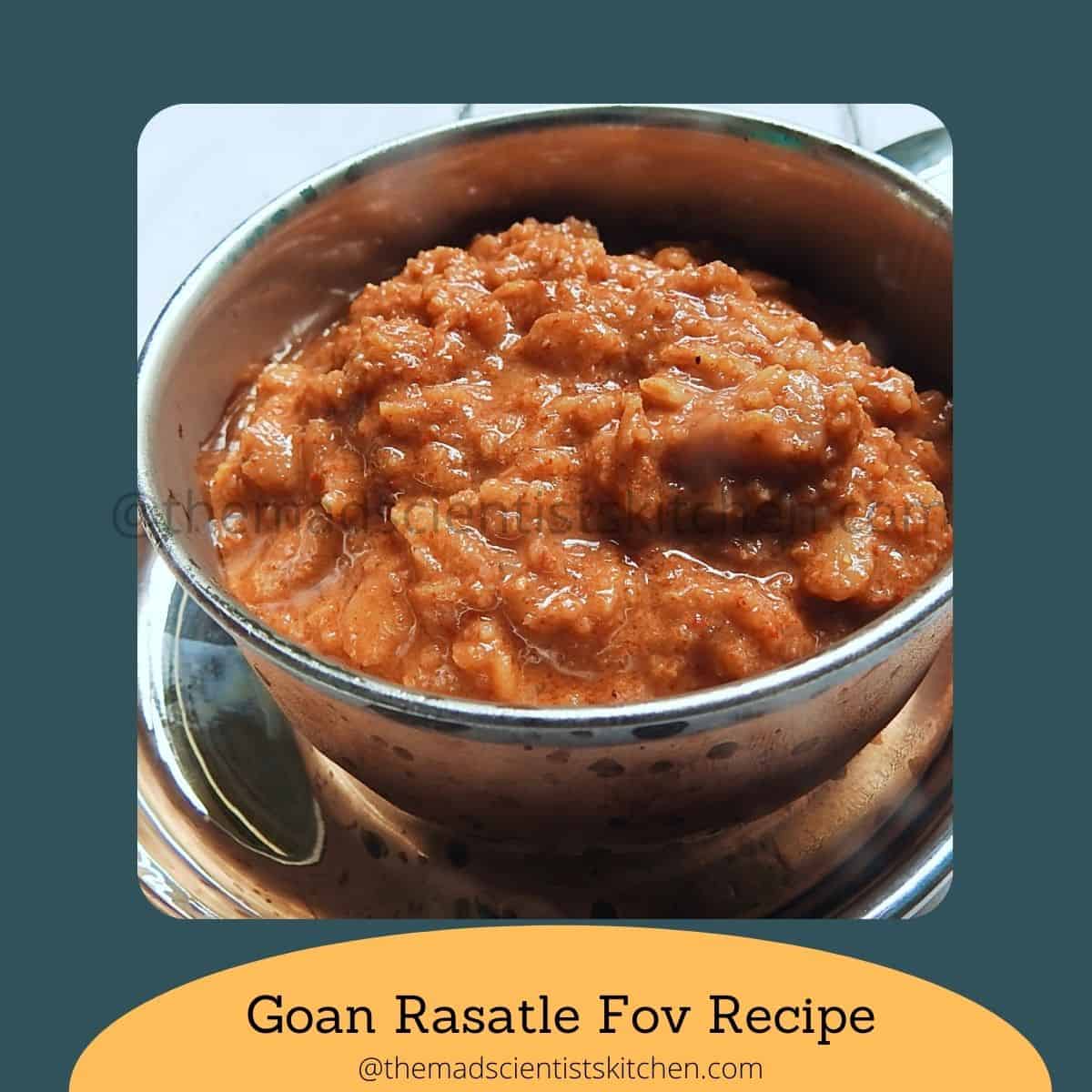
Rastle Fov is a classic Goan Dish made for Diwali. Made with coconut milk and poha recipe this recipe is sweet and tangy with spicy undertones.
Anybody lucky enough to visit Goa during Diwali is in for a treat! This is Goa as you’d never expect to see it. In the true spirit of the festival of lights, you’ll see beautiful lighting all around the streets, effigies of Narakasur burnt with sheer joy, glittering celebrations everywhere and at the centre of it all, a unique spread of food that is sure to take you by surprise.
The usual Diwali spread of Ragi Chakli Recipe, No Syrup Rava Ladoo Recipe, Besan Ladoo Recipe, Chivda and Sweet Poha is a part of the evening. Plus Ammade Che Karam, and Chana-Cho Ros, Batat Fov (made with potatoes in place of onions)also graces the table. But Poha, or as we call it, fov gets the spotlight.
I can guarantee you that you shall have never seen so many varieties of poha on one table. Rasatle fov is made with a delicious poha that is made from boiled rice aka ukde tandul. You only have to eat it to believe it.
Contents:
- Rasatle Fov and me
- Why make MSK Goan Rasatle Fov Recipe
- How to make Rasche Pohe
- For Your Questions
- Some Diwali Recipe you will like too
- Recipe card
- Pin for later
Hello, and welcome! I am known as The Mad Scientist’s Kitchen, reinventing the foodie in you!
Tired of choosing between tasty or healthy meals? No more! Here at the Mad Scientist’s Kitchen, I experiment with flavours and cuisines that are as nutritional as they are delicious.
Join me in my lab as we cook up some treats! You can stay up-to-date with my latest culinary adventures by subscribing to my newsletter. No scam, no spam, just the clink of my pots and pans!
I will love you to follow me on:
Rasatle Fov and me:
My relationship with Rasatle Fov:
I have the unique status as a Kannadiga married to a Maharashtrian who considers himself to be a Goan! Our Diwali is usually a crazy blend of traditions and customs that leave everyone’s heads spinning.
Truly, I have never seen my entire family agree on anything until it comes to the grumbling about waking up at the crack of dawn for the aarti. (Apeksha’s note: Every year she’s absolutely merciless about it, but it’s worth it for the breakfast!)
Contrary to their popular use as just a breakfast food, fov is part of the Diwali spread or faraal. In Goa, Diwali celebrations continue until Tulsi Vivaah. Every day, you’ll see more and more variations of poha, each tastier than the last.
My absolute favourite is obviously this, rasatle fov. As is the custom, every year we visit many of our friends and family for Diwali. At each house, no matter how full I am, I cannot help but eat this dish.
Rasatle Fov is generally the sweetened coconut milk and jaggery. But this recipe by my friend Vidya is different. At her place the Rasatle Fov has a flavour that is unbelievable.
At the end of the evening, I am so full, my husband always asks me if he should roll me into bed. I have no regrets!
Why make MSK Goan Rasatle Fov Recipe:
Poha is a healthier food item being a delicious seasonal recipe this Poha in coconut milk is
- Unique
- Vegan
- Is easy to make
- Poha is definitely healthier
- Perfect for the season
- Make-ahead
How to make Rasche Pohe:
Ingredients:
These are the ingredients you will need. For the exact measures, please check the recipe card.
- Fov or pohe/ beaten rice
For the Chutney:
- Cumin seeds
- Peppercorns
- Kashmiri chilli powder
- Asafoetida
- Coconut, freshly grated
- Salt to taste
For the Ras:
- Coconuts, freshly grated
- Tamarind juice
- Jaggery grated (adjust as per taste)
Substitutes:
- Though the local brown beaten rice is very tasty I have used the commercial variety often and it works.
- If you cannot get brown Poha use white poha the thick kind (not the one used to make chivda).
- The original recipe calls for 4 kashmiri chillies I have used the powder. A tablespoon is enough but adjust to suit your taste.
- The asafoetida has to be very fragrant here, we use what is called Shankar Chaap Hing.
- You can adjust the tamarind and jaggery to your taste.
Method:
The workflow in making a delicious Rastle Fov
- Soak the tamarind in water and extract thick juice.
- Dissolve jaggery in the tamarind water and set it aside.
Making the Chutney:
- Roast the cumin seeds, pepper, chillies, and the asafoetida without oil till get a delicious aroma.
- In the grinder add the cooled cumin seeds, pepper, chillies, asafoetida and coconut.
- Grind to a very fine, smooth paste use water as needed. However your chutney should be thick.
The traditional method of making coconut milk:
- In the blender add the grated coconut and little water.
- Grind to a smooth paste you can add water but add very little at a time.
- Strain the mixture with a fine sieve, cheesecloth.
- Press the coconut with the back of the spoon or palms to get maximum juice in a bowl. This is a thick liquid called “das ras /thick coconut milk” in Konkani.
- Now transfer the squeezed coconut back into the mixer andd water.
- Extract the juice again in a similar way. Collect the juice in another vessel this is the “patal ras /thin coconut milk”.
- Repeat the process yet again and collect the juice and add to the thin coconut milk.
- Refrigerate both the coconut milk bowls.
Putting together the Rasatle Fov:
- Wash the beaten rice in running water in a colander.
- Mix the thin coconut milk with jaggery and tamarind juice. Set aside.
- Transfer to a bowl and add 2-3 tablespoon chutney.
- Mix well till beaten rice is coated with the chutney.
- Add the thin coconut milk mixture to the beaten rice.
- Check the seasonings and adjust the taste. It should be tangy, sweet but sour taste. The mixture will be watery.
- Put the container in the fridge. Let it chill.
- The fov/ beaten rice will absorb all the water and thicken it.
How to serve:
- Portion out some of the Rastle fov from the fridge to a serving bowl.
- Add the thick coconut milk mix.
- Serve with some salt and chilli powder to account for individual atstes.
How to store:
- The chutney ccan be stored in the freezer for about a month.
- The poha once mixed in the coconut milk is best finished by the next day.
This is an old recipe that I had published on 6th April 2014. Updating the post now for SEO purposes and new pictures.
For Your Questions:
Protips:
- Mix the beaten rice in the thin coconut milk early in the morning and chill it. Generally, it’s made early in the morning and served later during the day.
- I have given a huge quantity here as it is made for visitors too.
- Beaten rice will swell when soaked.
- For one serving the standard ¼ cup of unsoaked beaten rice will be enough. Adjust as per taste the rest of the seasonings.
- I generally use 3 terra pack 200 ml each to make my coconut milk.
- I add ½ a pack of coconut milk and 1 ½ cups water and make my thin coconut milk. The rest is thick coconut milk that use as needed.
Some Diwali Recipe you will like too:
Recipe card:
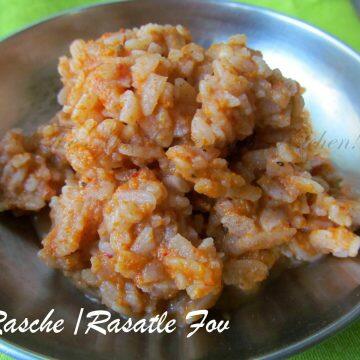
Goan Rasatle Fov Recipe
Equipment
- Spoons and Ladles
- Bowl for mixing
- Strainer
Ingredients
- 300 grams beaten rice approx
For the chutney:
- 1 tablespoon cumin seeds
- 15 black peppercorns
- 4 kashmiri chillies
- Asafoetida Powder small rock
- 1 coconut freshly grated
- salt to taste
For the Ras:
- 1-2 coconut freshly grated
- ¼ cup tamarind juice thick
- ¼ cup jaggery grated, adjust as per taste
Instructions
- Soak the tamarind in water and extract thick juice.
- Dissolve jaggery in the tamarind water and set it aside
Making the Chutney:
- Roast the cumin seeds, pepper, chillies, and the asafoetida without oil till get a delicious aroma.
- In the grinder add the cooled cumin seeds, pepper, chillies, asafoetida and coconut.
- Grind to a very fine, smooth paste use water as needed. However your chutney should be thick.
The traditional method of making coconut milk:
- In the blender add the grated coconut and little water.
- Grind to a smooth paste you can add water but add very little at a time.
- Strain the mixture with a fine sieve, cheesecloth.
- Press the coconut with the back of the spoon or palms to get maximum juice in a bowl. This is a thick liquid called “das ras /thick coconut milk” in Konkani.
- Now transfer the squeezed coconut back into the mixer andd water.
- Extract the juice again in a similar way. Collect the juice in another vessel this is the “patal ras /thin coconut milk”.
- Repeat the process yet again and collect the juice and add to the thin coconut milk.
- Refrigerate both the coconut milk bowls.
Putting together the Rastle Fov:
- Wash the beaten rice in running water in a colander.
- Mix the thin coconut milk with jaggery and tamarind juice. Set aside.
- Transfer to a bowl and add 2-3 tablespoon chutney.
- Mix well till beaten rice is coated with the chutney.
- Add the thin coconut milk mixture to the beaten rice.
- Check the seasonings and adjust the taste. It should be tangy, sweet but sour taste. The mixture will be watery.
- Put the container in the fridge. Let it chill.
How to serve:
- Portion out some of the Rastle fov from the fridge to a serving bowl.
- Add the thick coconut milk mix.
- Serve with some salt and chilli powder to account for individual atstes.
Video
Notes
- The chutney can be stored in the freezer for about a month.
- The poha once mixed in the coconut milk is best finished by the next day.
- Mix the beaten rice in the thin coconut milk early in the morning and chill it. Generally, it’s made early in the morning and served later during the day.
- I have given a huge quantity here as it is made for visitors too. Beaten rice will swell when soaked. For one serving the standard ¼ cup of unsoaked beaten rice will be enough. Adjust as per taste the rest of the seasonings.
- I generally use 3 terra packs 200 ml each to make my coconut milk.
I add ½ a pack of coconut milk and 1 ½ cups water and make my thin coconut milk. The rest is thick coconut milk that is used as needed.
Nutritional Disclaimer: I am not a certified nutritionist and make no claims to the contrary. Please check with your nutritionist for your dietary needs and restrictions. Ultimately you are responsible for your decisions.

Pin for later:
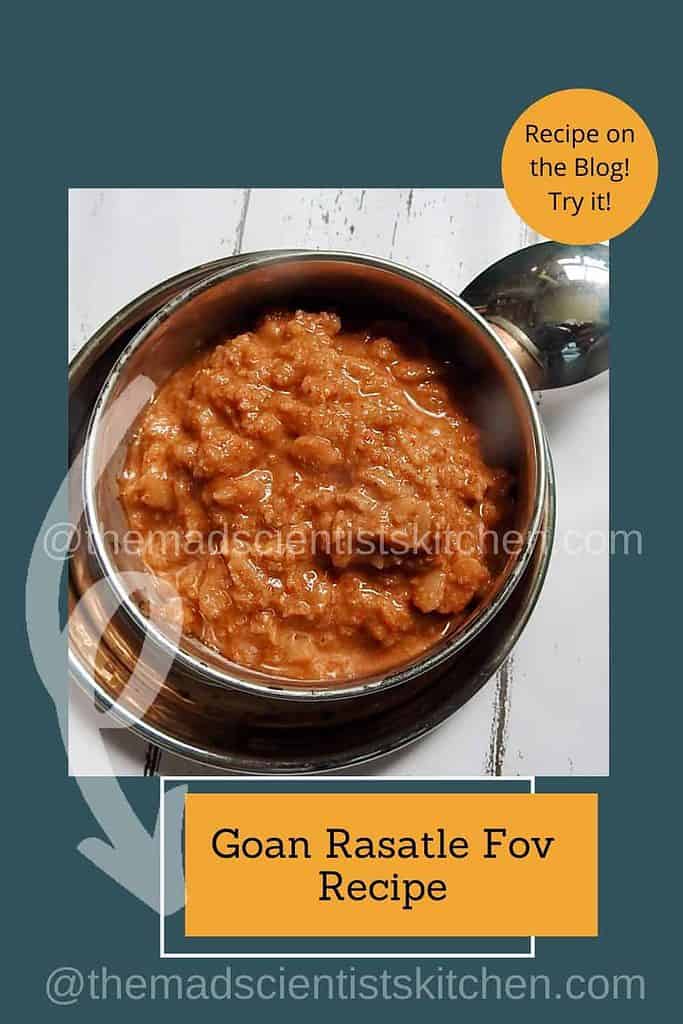


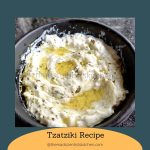
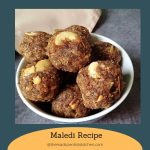
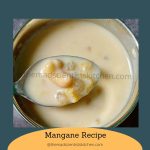
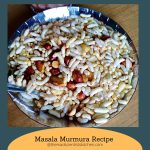
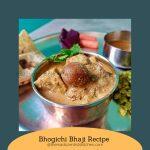
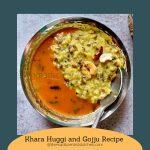
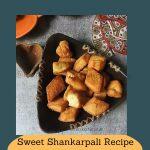

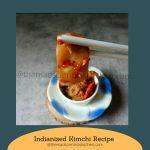
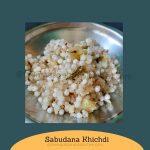
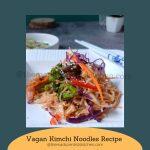
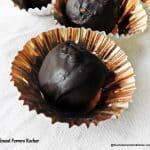
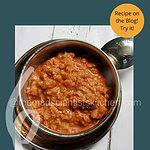
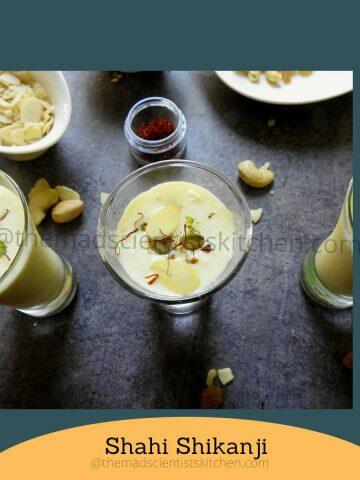
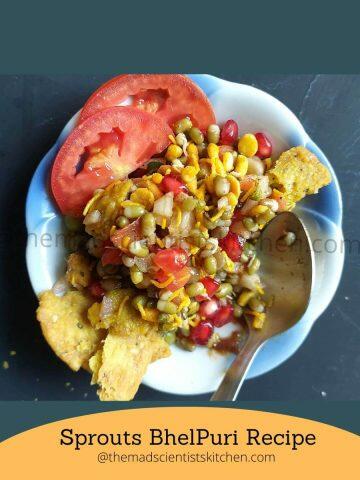
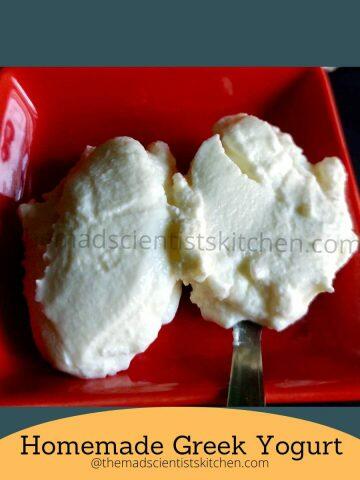
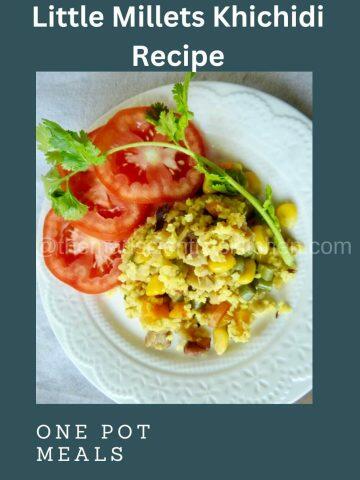
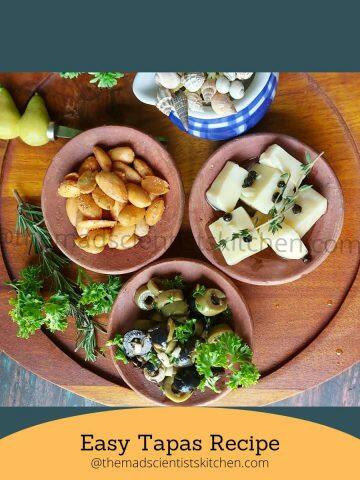

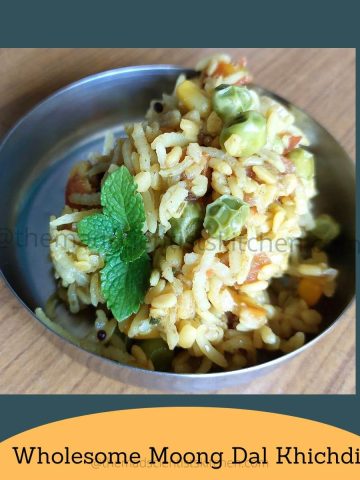
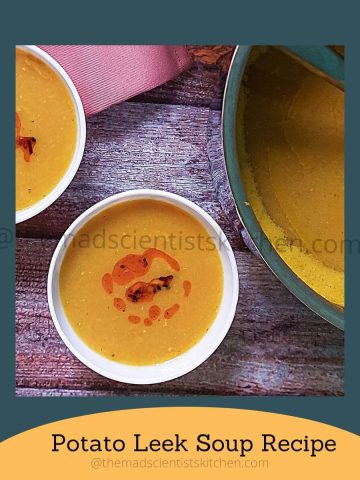
The Pumpkin Farm says
when i read the name of the dish i thought you have got yourself an easy way out ....n i think of you exactly the way you described kannadiga married to maha settled in goa...but you have done such a great job with your choice of dish for your karmbhoomi...i enjoyed this post the most
Priya Suresh says
Beautiful spread there, btw rasatle fov sounds very delicious, bookmarking to give a try soon.
Sapana Behl says
This version of phoe looks absolutely mouth watering !
Seema says
I really enjoyed reading this post. Such lovely memorable details of the diwali spread. I will love to try this Rastale fov recipe soon.
ArchanaPotdar says
thanks, Seema.
Nivedhanams Sowmya says
such a beautiful platter... love it..
Pavani N says
Thanks for sharing the Diwali traditions. That poha dish looks absolutely delicious.
Varadas Kitchen says
Enjoyed your post very much. The ammado chutney looks awesome! The spread of poha brought back memories.
Usha says
Enjoyed reading the post. We too call the one kind of oil lamp as kandili. Also loved the Diwali spread. You chose a nice recipe for the state. Looking at the title, the recipe looked simple but it really isn't.
Manjula Bharath says
Oh my such an informative on fov 🙂 the spread is looking so tempting and delicious fov varieties 🙂 Fabulous post dear 🙂
Jayanthi Padmanabhan says
enjoyed reading the post.
Gayathri Kumar says
Very interesting to read about your Diwali celebrations. And this type of poha preparation is very new to me. Learned a lot about Goan cuisine today...
Nalini's Kitchen says
Wonderful write up and the spread looks so inviting...
vaishali sabnani says
This takes me back to my GOA trip...this is yum...all of you there must try..I tried them while in GOA and simply loved them.
Harini-Jaya R says
Wow! this looks mouth watering, Archana. Nice to know the Diwali tradition out there..
Chef Mireille says
I love anything and this made with coconut milk must be awesome
Srivalli says
I was so waiting for this post Archana..ever since you told me that you were going to make this, I was so intrigued ..what a lovely spread and so much to read, thanks for the local history, enjoyed reading it.
Sandhya Ramakrishnan says
What a feast you have and it is lovely to read about the state from a resident of the state.
Sreevalli E says
Beautiful write up. The recipe is very interesting with all the flavors going on there.
Priya Vj says
A new recipe for me .loved to read the new tradition which I was unaware off ! Thanks for sharing such a nice info.
ArchanaPotdar says
Welcome.
Kalyani says
Roll you into bed ???????????? that sounds funny ! Honestly never heard of this delicious dish and from the ingredients and flavours definitely worth a try soon
ArchanaPotdar says
Come over and we can enjoy it in December.
Apeksha Potdar says
One of my favourites! <3
Mayuri Patel says
This rastle fov is definitely a unique recipe. Can image the coconut, sweet and tangy flavours all coming together. Wow!
ArchanaPotdar says
Thanks.
Narmadha says
Lovely to read about Goan cuisine and this rasatle fov is very unique recipe. It combines the flavor of both spicy and sweet. Looking forward to trying it during Diwali.
ArchanaPotdar says
Thanks, Narmadha.
Jayashree T.Rao says
Being from North Karnataka, I always enjoy eating poha. The rasatle fov is quite new to me, I am sure it tastes amazing. Good to have the recipe Archana.
ArchanaPotdar says
😀 we love poha in any form 😀
Kalyani says
that's an unique sweet - soicy fov I have never eaten.. another delish excuse to visit Goa. (or your place too!) nice take on the poha
ArchanaPotdar says
😀 come over Kalyani and we can enjoy it together.
Priya Vj says
Indeed a very new and different poha recipe. It bears resemblance to Karnataka style rasayana at the same time the addition of pepper ,cumin and tamarind is really intriguing. I love how diverse our food and culture are .
ArchanaPotdar says
😀 thanks Priya, even I though it a even resembles rasayana.